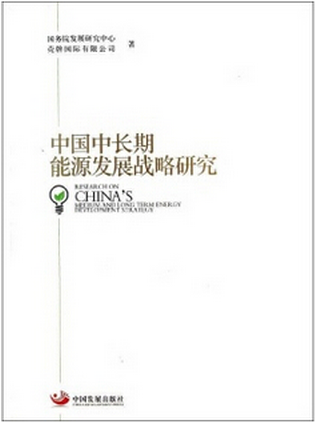Studies on China's Mid- and Long-term Energy Development Strategy
Sep 23,2015
|
 |
| Studies on China's Mid- and Long-term Energy Development Strategy |
Development Research Center of the State Council (DRC) & Shell Oil Co Ltd
Energy is an overarching and strategic issue with a great bearing on China's economic and social development. And the formulation of energy strategies and relevant policies and measures requires systematic planning and forward-looking visions. Since the beginning of 21st century, although there have been a number of domestic studies conducted on energy strategies, the fast-changing situation has outpaced previous forecasts.
Based on the above facts, the Development Research Center of the State Council (DRC) and Shell Group jointly launched the research program on “China's Mid- and Long-term Energy Strategy”, which garnered fruitful results through a series of studies made by DRC experts in energy field, as well as research institutions both from home and broad, including Tsinghua University, Tongji University, Harvard University and Wader Institution of Great Britain. The major findings are as follows: First, the field of energy is under major readjustments and reforms while profound changes are taking place in energy technology, energy market and energy geopolitics. Second, the next two decades are viewed as a window period providing an opportunity for China to engage in energy production and benefit from the reform. Third, a safe, green and highly-efficient energy system should be constructed with transformation of energy development model as the main focus. Fourth, China should actively respond to energy challenges in the process of urbanization and stick to a green and low-carbon path to urbanization. And fifth, the key to transformation of China's energy development model is making system and mechanism reforms.
This book consists of six parts: Introduction, Studies on the Trend and Development Approaches of China's Energy Demand and Supply, Studies on China's Energy Strategies of Low-Carbon and Smart Transportation, Studies on the Energy Issue in the Process of Urbanization, Studies on Strategies and Approaches of Energy Technology Innovation and Policy Framework to Promote the Transformation of China's Energy Development Model. The first part is the gist of the book, giving an overview of the research including its background, approaches and major findings. Part Two illustrates development of global energy system, changes in China's energy demand and supply, three scenarios of China's future energy development, analysis of optimized approaches of China's future energy development and major findings of the research. Part Three encompasses an analysis of the current situation and future development of China's energy consumption in transportation field, approaches and potentials of energy saving in civil transportation, approaches and potentials of energy saving in goods transportation and the general approach, policies and measures of energy development of China's low-carbon and smart transportation. The fourth part demonstrates challenges and opportunities brought about by the trend of urbanization, China's ecological city model, energy consumption of urban buildings in China and policy options. Part Five includes examination on global energy technology reforms and development of energy technology in China, an analysis of the complete life cycle of major energy technology, economic technology model in energy system, strategic approaches of energy technology and the technological road map as well as systems and mechanisms to promote energy innovation. The sixth part introduces the evolvement and evaluation of China's energy policies, problems and challenges of China's energy policies, international experience in energy policies and reforms and the objectives, approaches and suggestion on policy system to promote the transformation of China's energy development model.














